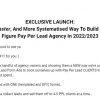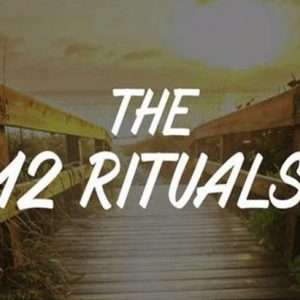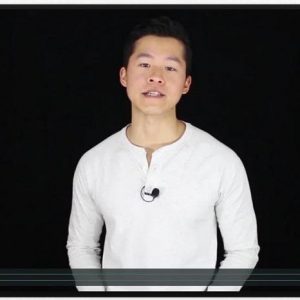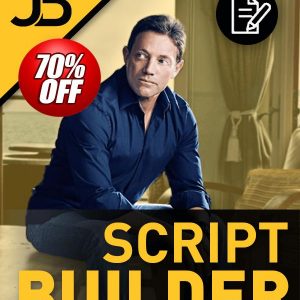Jerry Jenkins – Nonfiction Blueprint
$1,997.00 Original price was: $1,997.00.$35.00Current price is: $35.00.
Table of Contents
PART I: Laying the Foundation
In this section, I help you avoid problems typical to nonfiction writers: Fear of failure, not knowing where to start, hitting a brick wall after 30 pages or so, you name it. Imagine how much more confident and motivated you’ll be after laying the proper groundwork for your book.
You’ll learn:
- How to finally create a writing schedule you can stick to (and I walk you through creating yours)
- How to find your unique writing voice within just minutes
- Why you need an outline before writing your nonfiction book, and how to create one
- How to avoid coming off preachy
- The classic structure that changed my career decades ago (and which I’ve used to write everything since — fiction and nonfiction)
- How to unlock a wellspring of powerful true stories to tell in your book How fiction techniques bring your nonfiction book to life
- How to market your book to agents and publishers
- Plus a lot more!
And that’s all in just Part I of four parts! See how much you need to know even before you start writing, so you don’t end up lost in the middle?
PART II: Beginning the Writing
Here we spend a few sessions on your first page alone — where many nonfiction writers get hung up. We’ll get yours to where you’re thrilled with it before moving on, so you’ll be motivated to keep rolling.
You’ll learn:
- My secret to building a powerful sense of accomplishment and momentum during your very first brief writing session
- Everything I know about writing an opener that hooks your reader from the first sentence
- Little-known techniques for crafting a killer first page (failing at this is the #1 reason manuscripts get rejected)
- How to become a ferocious self-editor — you’ll see actual hands-on revision in action, the kind countless writers have told me is their favorite, most immediately applicable training
- And a lot more
PART III: Establishing a Writing Routine
Here, I bring you through your first several chapters and share my best secrets to help you cement habits that will carry you through the full process.
You’ll also learn:
- 5 powerful ways to raise the stakes and craft high-energy scenes — just as important in nonfiction books as in novels
- The key to triggering the theater of your reader’s mind — to so captivate him that he forgets he’s reading
- The crucial need to tell the hard truth in biographical writing
- The Author’s Golden Rule — which I advise you post where you’ll be reminded of it as you write
- And a lot more
PART IV: Finishing Well
By the time we reach the last section of Nonfiction Blueprint, you’ll have confidently written roughly the first quarter of your manuscript and reached the Marathon of the Middle. To finish well, you have to do more than just endure the middle. You must thrive there and keep things moving for the reader’s sake. I give you everything you need to complete the marathon and drive toward the finish.
So Part IV is designed to see you all the way to the end. That’s why I’ve peppered it with a truckload of guidance and encouragement to help you through some of the toughest parts of your nonfiction book.
You’ll learn:
- How certain nonfiction books become phenomenons
- Secrets to keeping your reader hooked all the way to the end
- The crucial role Theme plays in a nonfiction book
- Encouraging reminders of why you started this journey, and how to stay inspired until the last page
- 2 simple secrets to an epic ending readers will remember forever Guidance through becoming happy with every word before you shop your manuscript to agents and publishers
My goal is that by the end of this course, you’ll have written a nonfiction book you can’t wait to submit.
Bonus: The Query Letter and Proposal Package
Once you finish your manuscript, you’ll want to pitch it to agents or publishers. So I’ve included this special package with your membership so you can see exactly what I’d do in your shoes.
What you get:
1. My tips sheet, How to Impress Agents and Publishers
This short guide is designed to show you what each decision maker is looking for and how to make your work stand out. I also reveal 28 tweets from industry insiders to give you a look at what they actually want — and what annoys them!
2. Access to two successful proposals you can use as templates
These were prepared for manuscripts that went on to sell to publishers. Feel free to appropriate their ideas and apply their approaches to your own proposal.
3. My 90-minute seminar, How to Write Winning Queries & Proposals
This can save you hours of wasted effort.
This training is based on everything I’ve learned over several decades in the business — for which authors have paid thousands at writers conferences. If you’re serious about getting published, you’ll find this invaluable.
By the end you’ll know:
- The difference between a query letter and a cover letter and when to send which
- How to write a captivating proposal
- The structure of my most effective book proposals
- How to create a pitch that’ll have agents and editors asking to see your manuscript
- And more!
Sales Page:_https://jerrysguild.com/no-access/?lcg-source-id=32478&lcg-redirect=jjwg









